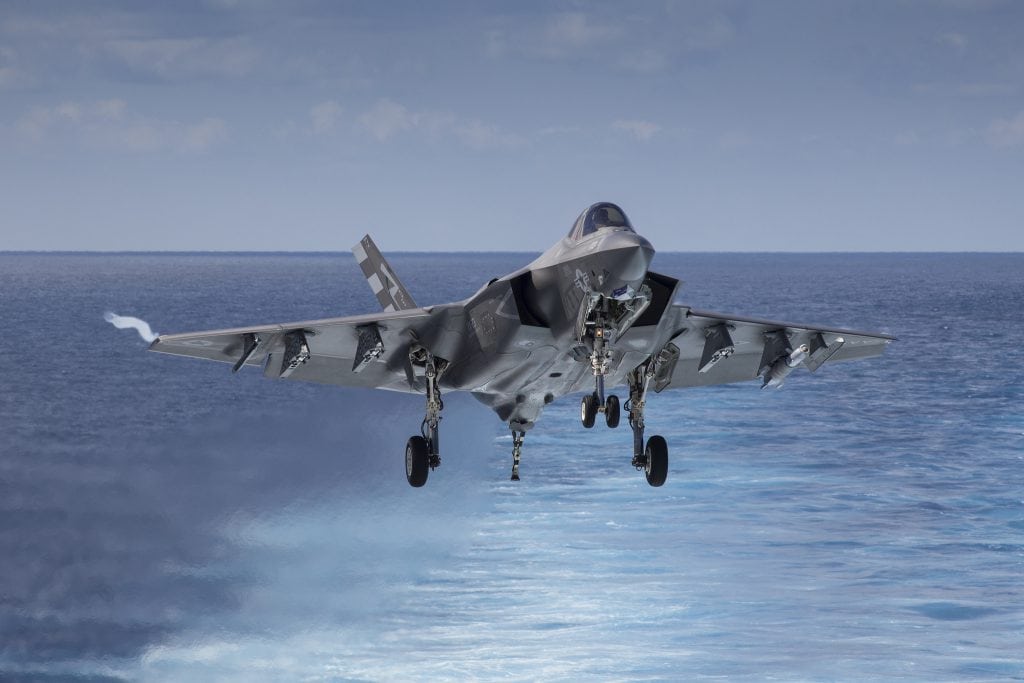
The U.S. Navy’s MQ-25 unmanned aircraft system (UAS) has been designed to land itself, using Raytheon’s Joint Precision Approach and Landing System (JPALS), Raytheon said. The Navy hopes to use the MQ-25 Stingray in the future for in-flight refueling. According to the company, JPALS will also be used to help naval aviators land on the decks of aircraft carriers at sea.
“JPALS is a differential, GPS-based precision landing system that guides aircraft onto carriers and amphibious assault ships in all weather and surface conditions up to the rough waters of Sea State 5,” Raytheon said. “It uses an encrypted, jam-proof data link, connecting to software and receiver hardware on the aircraft and an array of GPS sensors, mast-mounted antennas and shipboard equipment.”
The company went on to say that when the first Marine Corps Lockheed Martin F-35 squadron deploys early next year, it is planned that it will have an early operational capability JPALS unit onboard. The system is planned for production in 2019.
“JPALS will also provide shipboard air traffic controllers with information on the exact location of outfitted unmanned and low-observable aircraft,” Raytheon said. “This will create a hybrid environment, in which both manned and unmanned aircraft can be rapidly marshaled and recovered during flight operations.”
Raytheon said that, as described by its JPALS deputy program manager Mark Maselli, a pilot would start receiving range and bearing from the ship about 200 nm miles out from the ship, when using JPALS. The data would tell the pilot in what direction to proceed, and how far away the ship is. Then about 60 nm out, the aircraft would automatically log into the JPALS queue where more data would be received and exchanged. At 10 nm, the pilot would start receiving precision date for landing.
“To the pilot, it’s just needles on their head’s up display,” Maselli said. “They’ve got the horizon line and cross hairs and they’re just honing in on the target. This isn’t like a tractor beam with the jet bouncing up and down in rhythm with the ship — instead, it uses an algorithm that allows for a very smooth approach.”